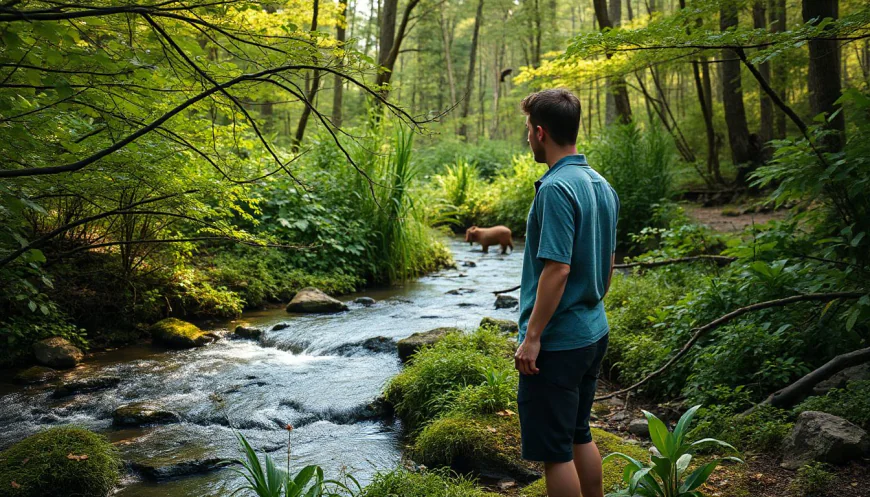How Man Interferes With the Innate Principle of Harmony
Humans often feel disconnected from nature. But deep down, we understand that life flows in a natural rhythm—a kind of balance called innate harmony. This harmony is a fundamental part of everything around us, from the thriving ecosystems to our own bodies. Yet, human activities regularly disturb this balance, causing problems for society and the environment. Recognizing how our actions interfere with innate harmony can help us make better choices. It’s the first step toward living in a way that respects and restores the natural order.

The Concept of Innate Harmony in Nature and Humanity
Understanding Innate Harmony
Innate harmony refers to the natural alignment within ecosystems, individuals, and entire societies. It’s what keeps things running smoothly without chaos or noise. This balance is based on millions of years of evolution, where species adapt to their surroundings, creating a stable environment. When everything works together in sync, a kind of silent agreement keeps the world balanced and alive.
The Biological Foundation of Harmony
Our bodies are built to operate in harmony with themselves and nature. Think about your heartbeat or sleep cycle—these are biological rhythms that keep us healthy. Research shows that humans—and other living beings—are wired to maintain a state of homeostasis, a stable internal environment. When this balance is maintained, we stay healthy, energized, and connected to the world around us.
Social and Cultural Dimensions of Harmony
Early societies understood the importance of harmony. Many cultures created customs, laws, and spiritual practices to maintain social cohesion. Indigenous groups, for example, often practice rituals that honor nature and promote balance. These traditions aimed to keep community and environment in harmony, not just for survival but for well-being. They remind us that harmony isn’t just biological—it's also social.
How Human Actions Disrupt Natural Harmony
Environmental Impact and Ecosystem Degradation
Pollution, deforestation, and climate change are the big disruptors. When we cut down forests or dump chemicals into rivers, we throw ecosystems into chaos. Statistics show that every year, humans clear about 10 million hectares of forest—an area roughly the size of South Korea. This destroys habitats and pushes many species toward extinction, upsetting the delicate ecological balance.
Overconsumption and Resource Depletion
Our constant pursuit of more—more gadgets, more clothes—drains natural resources faster than nature can replenish. The global demand for resources is now twice what Earth can provide sustainably. Think about water shortages, soil erosion, and dwindling fish stocks. When we overconsume, we steal from future generations and leave ecosystems scarred.
Urbanization and Habitat Fragmentation
Cities grow bigger and faster. As concrete replaces trees, wildlife habitats shrink. In places like India or the US, urban sprawl causes a 60% loss of biodiversity. Wildlife struggles to survive in fragmented patches of land, and many species cannot adapt quickly enough. The silence of disappearing animals signals how disrupted the natural harmony has become.
Technological Interference and Its Consequences
Technology can disconnect us from nature. Phones and screens often keep us indoors, away from the natural world. Excessive digital use can lead to digital addiction, reducing outdoor activity and interactions with real-life environments. We grow more isolated from the rhythms of the Earth, which weakens our innate sense of connection.
Human Psychological and Social Disturbances of Harmony
Stress, Anxiety, and Mental Health Issues
Constant hustle and social pressures throw off our mental balance. Many studies confirm that modern life fuels anxiety and depression. Artificial work environments and relentless screens rob us of restful moments in nature. When we ignore our mental rhythms, emotional well-being falters, disturbing inner harmony.
Cultural Disruption and Loss of Traditional Knowledge
Globalization floods us with new ideas, often replacing time-tested traditions. Indigenous communities, who once lived in tune with nature, lose their practices and stories. Their ancient wisdom, which teaches respect and balance, risks extinction. Without these practices, cultural harmony and ecological sustainability suffer.
Conflict and Social Fragmentation
Societies torn by division and inequality lose a sense of unity. Political conflicts, racial tensions, and economic disparities tear communities apart. This social unrest is a sign of imbalance. When people are disconnected from one another, social harmony breaks down, amplifying chaos instead of peace.
Strategies to Reconnect and Restore Innate Harmony
Embracing Sustainable Living
Small acts matter. Choose eco-friendly products, cut back on waste, and support green energy. Living simply and mindfully reduces impact. For example, eating locally grown food or reducing plastic use can help restore balance with nature.
Integrating Nature into Daily Life
Spend time outdoors—whether it’s a walk in the park or tending a garden. Even urban green spaces boost mental health and help us reconnect. Meditation and outdoor exercises strengthen our bond with earth's rhythms, bringing peace to our minds and environments.
Reviving Cultural and Traditional Practices
Preserve and practice indigenous customs that promote harmony. Celebrate local traditions and pass down eco-friendly knowledge. Supporting community projects that focus on cultural roots can sustain both social bonds and the environment.
Leveraging Technology for Good
Use apps and devices to monitor environmental health or increase social connection. Promote digital detoxes—regular breaks from screens—to restore balance. Mindful technology use can enhance our awareness of the world around us.
Conclusion
Man’s actions have created ripples that disturb the natural, social, and mental harmony of the world. These disruptions not only harm ecosystems but also weaken our inner and outer communities. Restoring innate harmony begins with small choices—living sustainably, reconnecting with nature, respecting cultural traditions, and using technology wisely. Only by embracing these changes can we protect the planet and ourselves, restoring the beautiful balance we all depend on. It's time to realign with nature’s original rhythm—before the imbalance becomes irreversible.



 VARSHITHA
VARSHITHA